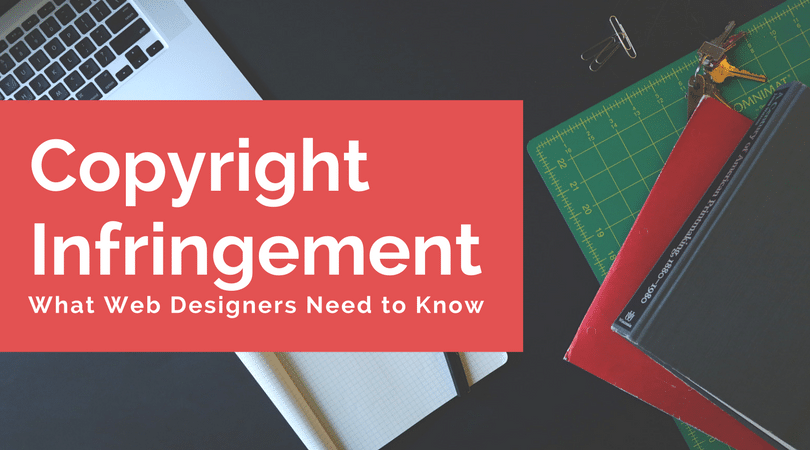Most web designers worry about things like maintaining a steady stream of paying clients, finding creative inspiration, and attending to the day-to-day demands of running their own business.
They don’t usually spend a lot of time thinking about the copyright of their designs–or what happens if they infringe upon someone else’s rights.
What is a Copyright?
Copyright is a legal protection. It is one of three types of intellectual property, which is a work or invention resulting from creativity.
- Copyright: protection for artistic or literary works
- Patent: protection for an invention
- Trademark: protection for a brand’s name and identity
Just like locks on doors protect material possessions, copyrights protect the things people create. If you use someone’s designs, illustrations, photos, or logos in your own design without permission, it is no different than walking into their house and stealing their TV.
Copyright infringement is a very real and prevalent concern for website designers. However, if you proceed with caution, use common sense, and take action to protect yourself, you can stay on the right side of the law.
1. Know What’s Protected
As soon as something exists tangibly, it is instantly the property of the creator and protected by copyright laws.
Once copyrighted material exists, there are four things that can happen:
- The owner can maintain the copyright and use the content exclusively.
- The owner can license the copyright to someone else so it can be used freely.
- The owner can license the copyright to someone else but restrict how it’s used.
- The owner can transfer ownership of the copyright entirely.
Before you use any material that isn’t yours, you must check the copyright. Are you allowed to use that photograph or illustration? If you are allowed to use it, you must follow licensing restrictions. A failure to do so means you have engaged in copyright infringement and could face legal repercussions.
An important thing to note is this: copyrighted material doesn’t need to include the © symbol to be valid. The symbol simply makes it easier to uphold claims of infringement, as you’ve been amply warned.
2. Add a Copyright Clause to Your Contract
There are several ways you could inadvertently breach copyright laws. It is also possible to unknowingly lose the copyright for something without your consent. The best way to avoid these scenarios is to add a copyright clause to your contract before work even begins.
Here’s what you should take into consideration:
- Usually, the copyright owner is the person who created the material. However, there is a “work for hire” stipulation. If you have been hired to create that material for someone else, the person who hired you owns the copyright.
- Outline when copyright ownership will be transferred. Maintain ownership until the project has been paid in full. Otherwise, because of “work for hire”, your client could take off with your designs and leave you with nothing.
- Assign liability. If the client provides you with material to use and it violates copyright laws, make sure the client–and not you–will be liable.
3. Host With Caution
The Digital Millennium Copyright Act governs how content is used online and enforces compliance. The DMCA demands that internet service providers must remove any content that is copyright infringement if the copyright owner issues a Takedown Notice.
If you host your client’s website and the content is found to be in violation of the DMCA, you will be held liable. And what’s worse, you’ll be forced to remove your client’s site–the one you created for them.
If you are going to host your clients’ sites, proceed with caution. Make sure you explain the DMCA and what you’ll be required to do if the provided content has been lifted from somewhere else.
Copyright: A Serious Matter for Designers
Whether you made an innocent mistake or your client intentionally stole from others, just a single case of copyright infringement can have a significant impact on your design career.
Know what you can and can’t do, and make sure you always error on the side of caution.





